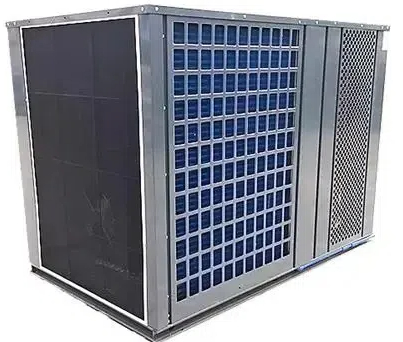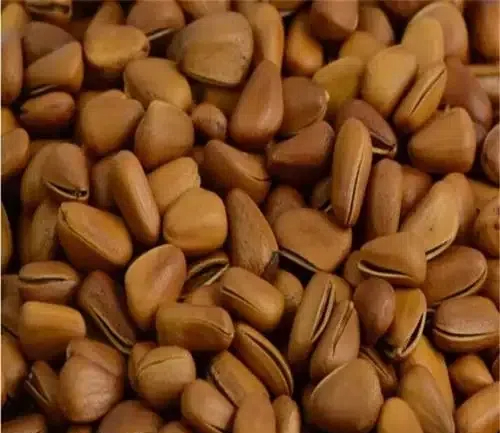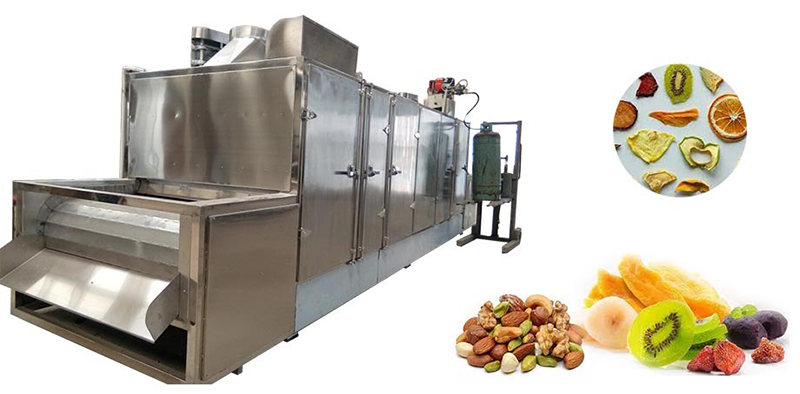
Content Menu
● Understanding Heat Pump Dryers
● Benefits of Using Heat Pump Dryers for Food Products
● How Heat Pump Dryers Work
● Steps to Properly Connect a Heat Pump Dryer
>> Step 1: Choose the Right Location
>> Step 2: Prepare Electrical Connections
>> Step 3: Connect Water Drainage (if applicable)
>> Step 4: Position the Dryer
>> Step 5: Make Final Electrical Connections
>> Step 6: Test the Dryer
● Operating Your Heat Pump Dryer for Food Products
>> Selecting the Right Settings
>> Loading the Dryer
● Maintenance Tips for Your Heat Pump Dryer
● Advantages of Food Heat Pump Dryers
>> Increased Energy Efficiency
>> Cost-Effectiveness
>> Precise Temperature Control
>> Retention of Nutrients
>> Reduced Drying Time
>> Increased Shelf Life
>> Reduced Environmental Impact
● Conclusion
● FAQ
>> 1. What is a heat pump dryer?
>> 2. How does a heat pump dryer differ from traditional dryers?
>> 3. Can I dry all types of food in a heat pump dryer?
>> 4. How often should I clean my heat pump dryer's filters?
>> 5. Is professional servicing necessary for my heat pump dryer?
Heat pump dryers have become a popular choice for many households and businesses due to their energy efficiency and gentle drying capabilities. When it comes to connecting a heat pump dryer, proper installation is crucial for optimal performance. This article will guide you through the steps to properly connect a heat pump dryer, focusing on food drying machines, while also providing insights into their operation and benefits.

Understanding Heat Pump Dryers
Heat pump dryers work by using a refrigeration cycle to remove moisture from clothes or food products. Unlike traditional dryers that vent hot air outside, heat pump dryers recycle the air within the machine, making them more energy-efficient. This technology is particularly beneficial for drying sensitive food products without compromising their quality.
Benefits of Using Heat Pump Dryers for Food Products
- Energy Efficiency: Heat pump dryers consume significantly less energy compared to conventional dryers, making them cost-effective in the long run.
- Gentle Drying: The lower temperatures used in heat pump drying help preserve the nutritional value and texture of food items.
- Versatility: These dryers can be used for various food products, including fruits, vegetables, herbs, and meats.
- Environmentally Friendly: By reducing energy consumption, heat pump dryers contribute to lower carbon emissions.
How Heat Pump Dryers Work
Heat pump dryers operate using a closed-loop refrigeration system. Here's a simplified breakdown of how they function:
1. Air Intake: The dryer draws in ambient air through an intake vent.
2. Heat Absorption: This air passes over an evaporator coil filled with refrigerant, which absorbs heat from the air.
3. Moisture Removal: The warm air then circulates through the drum containing wet clothes or food items, where it absorbs moisture.
4. Cooling and Condensation: After absorbing moisture, the air passes through a condenser coil where it cools down, releasing moisture in the form of water that collects in a tank or drains away.
5. Recycling Air: The cooled air is then reheated by the compressor and cycled back into the drum to continue the drying process.
Steps to Properly Connect a Heat Pump Dryer
Connecting a heat pump dryer involves several steps to ensure that it operates efficiently and safely. Below is a detailed guide:
Step 1: Choose the Right Location
Select a well-ventilated area for your heat pump dryer. Ensure that there is enough space around the unit for airflow and maintenance access. Ideally, the location should have:
- A stable floor
- Access to electrical outlets
- Adequate drainage (if applicable)
Step 2: Prepare Electrical Connections
Heat pump dryers require a dedicated electrical circuit. Follow these guidelines:
- Check Voltage Requirements: Most heat pump dryers operate on 220V to 240V. Ensure your electrical supply matches these requirements.
- Use Proper Wiring: Employ appropriate gauge wiring as per local electrical codes. If unsure, consult with a licensed electrician.
- Install a Dedicated Circuit Breaker: This prevents overloads and potential damage to your dryer.
Step 3: Connect Water Drainage (if applicable)
Some heat pump dryers come with a built-in condensate tank that collects water during the drying process. You can either:
- Use the Condensate Tank: Manually empty it after each use.
- Connect to Drainage: If your model allows it, connect a hose from the dryer's drainage outlet to a nearby drain or sink.
Step 4: Position the Dryer
Carefully move your heat pump dryer into place. Ensure that:
- The unit is level; use adjustable feet if necessary.
- There is sufficient clearance around all sides for ventilation.
Step 5: Make Final Electrical Connections
Once positioned correctly, plug the dryer into the electrical outlet. Ensure that the connection is secure and that there are no exposed wires.
Step 6: Test the Dryer
Before using your heat pump dryer for food products, conduct a test run:
1. Turn on the dryer.
2. Select the appropriate drying cycle.
3. Monitor for any unusual noises or error codes.

Operating Your Heat Pump Dryer for Food Products
After successfully connecting your heat pump dryer, it's essential to understand how to operate it effectively for food drying:
Selecting the Right Settings
Most heat pump dryers come with various settings tailored for different types of food products. Here's how to choose:
- Fruits and Vegetables: Use lower temperatures (around 50°C) to preserve nutrients.
- Meats and Fish: Higher temperatures may be required but ensure they are within safe limits.
Loading the Dryer
Proper loading ensures even drying:
- Avoid overcrowding; leave space between items.
- Use trays or racks designed for your model to allow airflow around each item.
Maintenance Tips for Your Heat Pump Dryer
To ensure longevity and efficiency, regular maintenance is vital:
- Clean Filters Regularly: Clogged filters can reduce efficiency and increase energy consumption.
- Inspect Hoses and Connections: Regularly check for leaks or blockages in drainage hoses.
- Schedule Professional Servicing: Consider annual check-ups by professionals to maintain optimal performance.
Advantages of Food Heat Pump Dryers
Food heat pump dryers offer several advantages over traditional drying methods:
Increased Energy Efficiency
The primary advantage of using a food heat pump dryer is its high energy efficiency. Unlike traditional drying methods, which generate heat through combustion or electric resistance heating, heat pump dryers extract ambient heat from the environment. This significantly reduces energy consumption compared to hot-air dryers or conventional methods.
Cost-Effectiveness
While initial investments in heat pump dryers may be higher than traditional options, their long-term savings are substantial due to lower energy costs over time. They do not require fuel or flames like other drying methods, further reducing operational expenses.
Precise Temperature Control
One of the most significant advantages of food heat pump drying is its ability to maintain precise temperature control using sensors and thermostats. This enables food products to be dried at optimal temperatures, resulting in more uniform products with consistent taste, texture, and flavor.
Retention of Nutrients
Food heat pump drying is a gentle process that preserves nutrients in food items better than other methods like sun-drying or hot-air drying. This makes it ideal for drying fruits, vegetables, and herbs rich in nutrients while maintaining their quality.
Reduced Drying Time
Compared to traditional methods, heat pump dryers can significantly reduce drying time due to their high heat transfer efficiency when using air as the drying medium. This is particularly advantageous when dealing with perishable items requiring rapid drying.
Increased Shelf Life
The gentle drying process effectively inhibits bacterial growth by removing moisture from food products, thus increasing their shelf life significantly. This makes heat pump dryers ideal for preserving fruits, vegetables, meats, and seafood products.
Reduced Environmental Impact
Using food heat pump dryers has less environmental impact compared to other methods since they do not generate emissions or pollutants during operation. Their energy efficiency also leads to reduced reliance on fossil fuels and lower carbon footprints overall.
Conclusion
Connecting a heat pump dryer involves careful planning and execution but offers significant benefits in energy efficiency and product quality when used for food drying. By following these steps—selecting an appropriate location, ensuring proper electrical connections, positioning correctly, testing functionality, and understanding operational settings—you can maximize your heat pump dryer's performance while enjoying its numerous advantages over traditional methods.
Regular maintenance will further enhance its lifespan and efficiency while ensuring that your food products are dried safely and effectively. As we continue moving towards more sustainable practices in both household appliances and food preservation methods, adopting technologies like heat pump dryers will become increasingly beneficial not just economically but also environmentally.

FAQ
1. What is a heat pump dryer?
A heat pump dryer is an energy-efficient appliance that uses a refrigeration cycle to dry clothes or food products by recycling air within the machine instead of venting it outside.
2. How does a heat pump dryer differ from traditional dryers?
Heat pump dryers operate at lower temperatures and recycle air internally; this makes them more energy-efficient compared to traditional dryers that vent hot air outside.
3. Can I dry all types of food in a heat pump dryer?
Yes! You can dry various food items such as fruits, vegetables, herbs, meats, and seafood using appropriate settings on your heat pump dryer.
4. How often should I clean my heat pump dryer's filters?
It's recommended to clean filters regularly—ideally after every use—to maintain efficiency and prevent overheating issues within your machine's system.
5. Is professional servicing necessary for my heat pump dryer?
While regular maintenance can be performed at home by users themselves (like cleaning filters), scheduling professional servicing annually ensures optimal performance over time through expert checks on all internal components as well as external connections where applicable.











